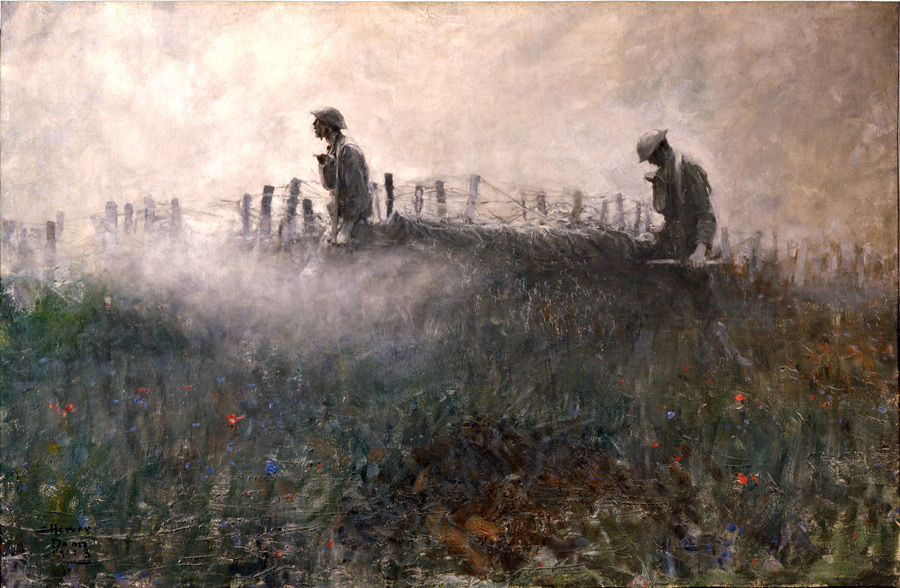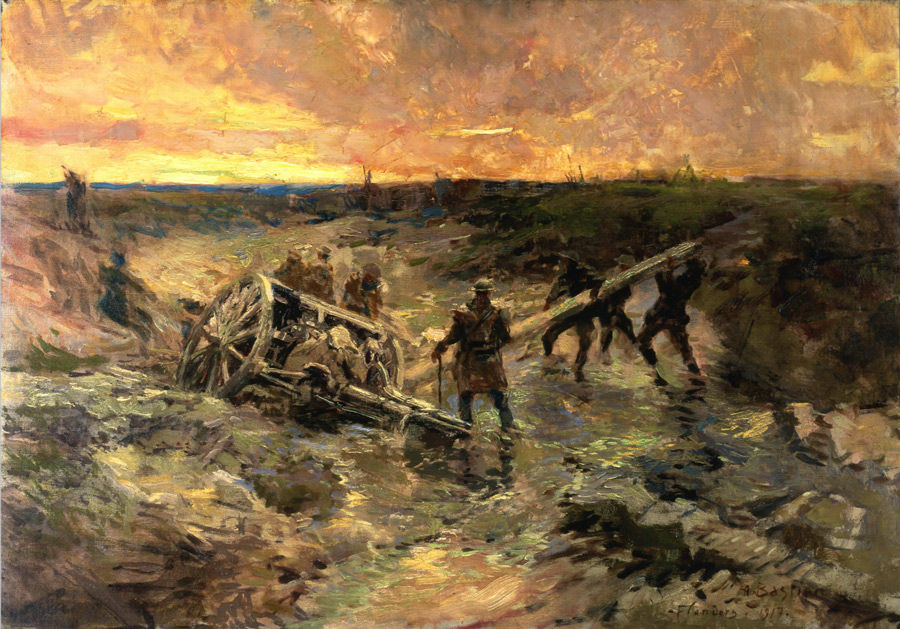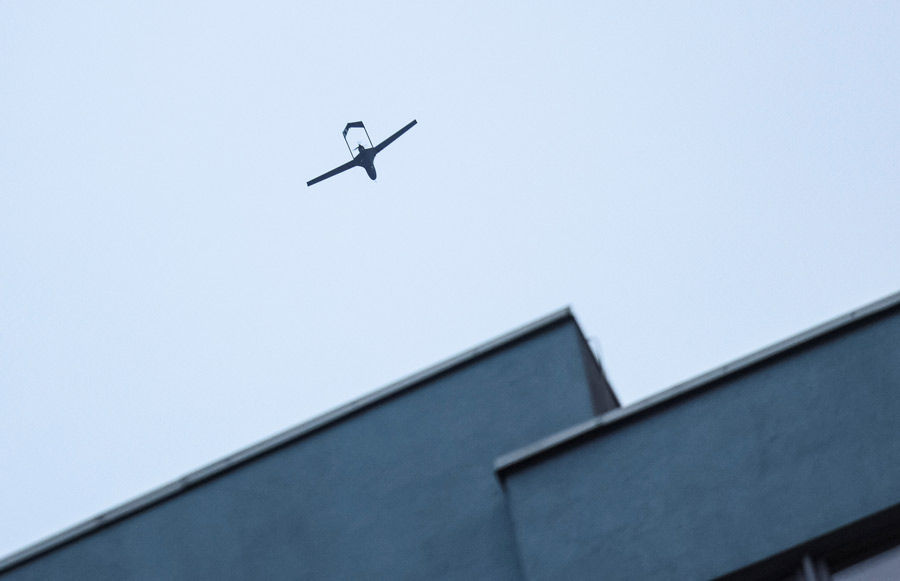War and the Political Form
- The Blind Arcade
- Feb 13, 2024
- 7 min read
Updated: Feb 13, 2024

When the First World War kicked off in 1914, cavalry charges were still considered a potent weapon of offensive warfare. All sides tried them in the early months. There were some pretty big British charges in France and a few massive cavalry attacks by the Austrians and the Russians on the Eastern Front. These charges had one thing in common — immensely high casualty rates among those on horseback. Machine guns and artillery and concentrated rifle fire tore the cavalry to pieces, and in doing so also dealt a heavy blow to the aristocracy of the combatant societies.
Serving as cavalry officers was a centuries-old tradition among many families in the European nobility. Other members of the ruling classes became fighter pilots — a new brand of soldiery with similarly high casualty rates. Their obliteration hastened the sunset of the aristocracy across the continent. By the war’s end, the crowns and banner of noble houses throughout Europe would lie in the gutter, and a new era was born ruled by Democracy, Socialism, and Communism.

When you look deeper at the history of politics and war, you begin to see a pattern of dominant weapons and tactics on the battlefield influencing the political organization of the powers that wield them. The effect is a see-saw of sorts between more “aristocratic” forms and more “democratic” forms, with much depending on the balance between the power of skill-intensive centralized heavy weapons platforms and the power of mass units that require less skill and training.
For example, for centuries in the ancient world the dominant heavy weapons platform was the chariot. Chariots were fast, powerful, and capable of carrying infantry units like archers and stone throwers and javelins. They provided significant protection compared to soldiers on foot, and kings and pharaohs would ride them into the battle confident in the balance of security and killing power. The chariot was an “aristocratic” trending toward autocratic weapons system, expensive to build and train for and thus only worth granting to elites within those societies.
The chariots ruled the deserts and plains of the Levant until coordinated heavy infantry like Greek hoplites made them obsolete. These units were also highly skilled, but you needed a lot of them and so the Greek city states drew from their citizenry. Farmers-soldiers would provide their own equipment and support their own training, and so reflected the more “democratic” nature of there societies, with political power spread among the population in the way the killing power of their military was spread across their infantry formations.

Take one of the most aristocratic ages in Western history, the Medieval period. The premiere military unit of this era was the mounted knight. It was the main battle tank of its day, capable of dealing tremendous damage while taking minimal risk from mass infantry. It also took a tremendous amount of skill and training and resources to produce a knight, and so only those of noble blood could become one. The aristocracy of that period were fighting men, like they have been in every period with a true aristocratic class, but the nature of the combat and their role as mounted knights made it so they weren’t often killed in battle. Many medieval battles were decided by position and sometimes by a brief push-and-pull of formation, and rarely resulted in total destruction of men on the ground much less those on horseback.
At least until the Battle of Crecy in 1346 during the Hundred Years War between England and France. The English had invested a lot of training into the longbow, their newer more “democratic” weapon system that could be wielded by unarmored soldiers who didn’t come from the nobility. Unlike previous bowmen, these units could pierce heavy armor, and thus a centuries-old aristocratic advantage was neutralized. The French charged these English longbowmen with their mounted knights, decked out in shimmering plate armor and luxurious cloaks, and the volleys of arrows tore them apart. A class of warrior nobles brought up on the idea of honorably fighting eye-to-eye watched the horror of a mass of serfs unleashing death upon them from distance. Even nobles on the English side were unsettled.
The French aristocracy was decimated, which cracked their political order such that they had to reorganize their military and grant greater authority to lesser nobles and gentry. They would eventually win the war, but it would take them a century to push the English out of France. The European aristocratic system would begin a gradual unraveling which would enter into hyperdrive during the Protestant Reformative and the bloody chaos of the 17th Century, which saw the “modern armies” of innovators like Swedish emperor Gustafus Adolphus who created systems that could train and mobilize larger swaths of the citizenry.

The aristocracy of Europe would reconstitute and strengthen itself to some extent in the eighteenth century, as gunpowder units became preeminent on the battlefield. But these units required a highly regimented command structure to maintain and a high level of skill to deploy and command in combat. This gave rise to what we would recognize as the modern “officer corps,” which fit nicely into the aristocratic class structure of European societies and thus buttressed their position. Nobles earned legitimacy by their presence in battle and yet the nature of the combat kept them mostly safe. This kind of musket warfare was less bloody, ending in withdraws or surrenders much more often than obliteration. That era’s warfare also gave birth to modern “rules of war,” which were really a form of manners between nobles — a concordance within a social class. It was probably the most polite era of combat in world history.
The violence would escalate when Napolean’s command of mobile artillery — and his recruitment of throngs of “citizen soldiers” in Revolutionary France — made destroying armies in the field much more feasible and provided a glimpse of true mass mobilization not seen previously amongst powers that were very wary of arming their peasant populations. But the decisive British victory in the Napoleonic Wars and the ensuing Pax Brittanica delayed the political consequences for a century. The British had one of the most rigid class structures in the West, and they were first and foremost a naval power. Their ships were run like mini kingdoms, and featured absolute power down the chain of command headed by senior officers that almost always came from the nobility. Very aristocratic.
The royal houses of Europe were already eroding in the wake of the French Revolution, but the global dominance of the British helped to uphold the political order until the aforementioned bloodbath of the First World War.

The Great War dealt a fatal gut wound to the British Empire, and her decline along with the toppling of royal houses across Europe spelled the end of the aristocratic order in the West. In its wake, the 20th century has been ruled by mass armies mobilized by nation states that could call upon millions of their citizens in times of conflict. The Second World War put far more more men in uniform than ever before in human history. The Germans and the Russian would fight single battles that featured millions of soldiers. The race war between the Japanese and Chinese likewise killed millions. Even the United States — previously a regional power that kept a smaller, British-style aristocratic military — ended the war with fifteen million men in its armed forces.
Mass industrialization enabled nations to equip these gigantic forces and maintain them for long stretches of time, and this resulted in societies chock full of veterans. Similar to the veteran-farmers of the Greek city-states, these “citizen soldiers” were churned out by the millions. Many of them had been enlisted via mass conscription, and mass conscription required some level of mass enfranchisement, especially in the West. These trends tore societies from aristocratic forms in various ways — the Americans toward mass democracy, others like the Soviet Union and Maoist China toward state communism. The Cold War in which these two post-aristocratic factions engaged saw them maintain enormous “peacetime” militaries at incredible expense. The American won out, and have still maintained a large one-to-two million man army since the 1990s. And it has become ever more democratic over that time.

The drone warfare now seen in the Ukraine could foretell a turnaround in military forms, and thus a possible return back to older political forms as well. But the picture is cloudy, at least to me. New types and approaches have been rolled out as the two armies try to break the stalemate in the Donbass, and they’ve proven their effectiveness at taking out infantry, armor, and even aircraft. Soldiers on the ground will panic at the whirring sound of those quad-copter blades like G.I.s would dread the heavy rumble of an approaching German Tiger tank.
But it’s worth noting that in the early months of the war the Russian armored columns were more flustered by shoulder-mounted anti-armor weaponry like the Javelin, which took out Russian vehicles with alarming ease in a manner that harkens back to those English longbowmen taking out French knights at Crecy — even the Javelin’s name recalls a means for a foot soldier to take out cavalry. But then the hunter-killer drones arrived and came for these men as well, and turned the Ukraine into a Battle of Crecy in which both sides were ripped to shreds.
The great stalwarts of modern militaries — paladins like the main battle tank and the nuclear aircraft carrier — could soon find themselves thrown into the junk heap by swarms of these drones. Heavy tanks already lay strewn about the killing fields of the Ukraine, and a war between the United States and China will likely see one or more carriers sent down in ruins to the depths of the Pacific. Those weapon systems may seem aristocratic in the way of the medieval mounted knight, but in reality they are products of the democratized systems of the 20th Century — only possible via mass industrialization and mass mobilization of men and material. Merciless machinery designed to overwhelm enemy defenses and wage offensive war over vast distances. After all, the military structures of the United States and Russia were built - and pretty much remain built — on the premise of a great Cold War clash in Germany’s Fulda Gap, where planners imagined titanic tank battles similar to the Battle of Kursk in the Second World War.
But those plans required millions of soldiers and thus vast national systems to field and maintain them, whereas the rise of the drones might mean a massive drop in the number of personnel needed to achieve military objectives. Perhaps the high-IQ technicians and engineers needed to develop, maintain, and operate the battlefield drones of the future become as the mounted knight, a new class techno-warrior-nobles able to look down upon the lesser trained peons who scurry around the battlefield mostly helpless before their killing blows. At least until the machines don’t even need them anymore, in which case we’ve likely crossed into some new historical cycle.
In any event, it feels like a time of great transition both on the battlefield and in the political. And as current leaders and systems scramble to realign, perhaps the only safe bet in the near term is chaos.




Comments